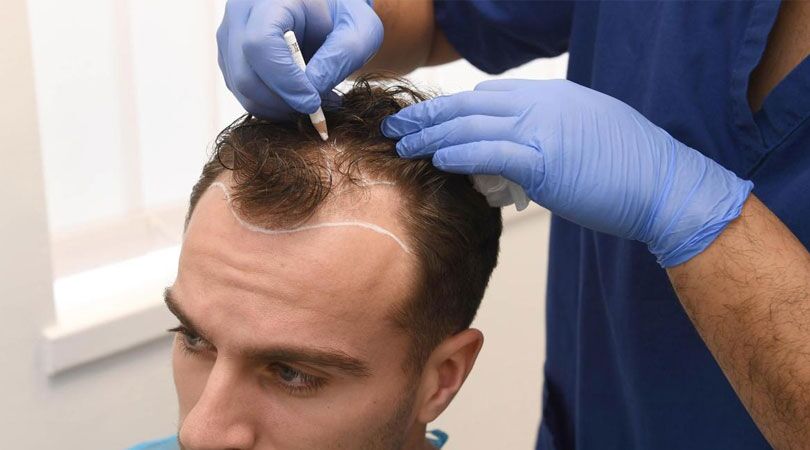
Hair loss affects millions worldwide, both men and women, causing not just physical changes but also a deep impact on confidence and self-esteem. Traditional treatments, while helpful for some, often come with limitations and temporary results. However, with advances in regenerative medicine, stem cell therapy has emerged as a revolutionary option, showing real promise in hair regrowth and restoration. For those tirelessly searching for effective solutions, often typing hair transplant near me into their search bars, stem cell-based approaches might be the breakthrough they've been waiting for.
Understanding the Science Behind Stem Cells
Stem cells are unique in that they have the potential to develop into many different types of cells in the body. In the context of hair restoration, they are particularly valuable due to their regenerative abilities. Unlike traditional hair transplants that relocate existing follicles from one part of the scalp to another, stem cell treatments aim to stimulate dormant hair follicles or even generate new ones entirely.
There are two main types of stem cells considered for hair regrowth: embryonic stem cells and adult stem cells. However, the most commonly used in therapies are adult stem cells, often harvested from the patient’s own body—such as from fat tissue (adipose-derived stem cells) or bone marrow. These cells are then processed and injected into the scalp, where they interact with existing hair follicles and trigger repair and regrowth.
How Stem Cell Therapy Works for Hair Loss
The process begins with collecting a small sample of tissue from the patient. This sample is then subjected to a process that isolates and concentrates the stem cells. Once prepared, the stem cells are injected into areas of the scalp showing signs of thinning or hair loss. The goal is to reawaken dormant follicles and encourage them to begin producing hair again.
Unlike synthetic medications or invasive surgery, stem cell therapy leverages the body’s natural healing abilities. The stem cells release growth factors that stimulate follicular regeneration, increase blood flow to the scalp, and reduce inflammation—creating the optimal environment for hair to grow.
One of the most compelling aspects of this therapy is that it's minimally invasive, carries fewer risks of side effects, and offers a shorter recovery period compared to traditional hair transplant methods. Early clinical studies and patient experiences have shown encouraging results, including thicker hair, improved density, and slowed hair loss.
Benefits That Go Beyond the Surface
While the most visible benefit is the restoration of hair, stem cell therapy provides additional advantages. For instance, it enhances scalp health by improving circulation and tissue regeneration. This contributes to a healthier environment for follicles to thrive and remain active for longer periods.
Another key benefit is the personalized nature of the treatment. Because the stem cells come from the patient’s own body, there’s minimal risk of rejection or allergic reaction. It’s a tailored therapy that aligns perfectly with the body’s biology, making it a safer and more natural solution for long-term hair health.
Furthermore, stem cell treatments are not exclusive to individuals facing severe hair loss. They are also an excellent preventive measure for those noticing early signs of thinning, helping them preserve existing hair and delay more noticeable hair loss.
Challenges and the Future of Stem Cell Hair Treatments
Despite its potential, stem cell therapy for hair restoration is still in its early stages. More extensive clinical trials are needed to establish standardized protocols, long-term effectiveness, and optimal cell dosages. Not all patients may respond equally to treatment, as individual results can vary based on factors like age, genetics, and the severity of hair loss.
Additionally, accessibility and cost can be barriers for some. Since these procedures are relatively new and often not covered by insurance, affordability remains a concern. However, as the technology matures and becomes more widely available, it's expected that prices will come down, and more people will be able to access this promising treatment.
Regulatory approval is another hurdle. In many countries, the use of stem cells is heavily regulated, and not all clinics offering these services meet medical standards. Therefore, it’s crucial for patients to do thorough research and consult with reputable professionals before undergoing treatment.
Nevertheless, the future is bright. With ongoing research, it's likely that we’ll see the development of even more advanced stem cell techniques—such as bioengineered follicles and combination therapies—that can further enhance outcomes. Innovations may also include the use of exosomes, micro-needling, and laser therapies in tandem with stem cell injections to maximize hair regeneration potential.
Conclusion: A New Era in Hair Restoration
Stem cell therapy marks a paradigm shift in how we approach hair loss. Rather than relying solely on medications or surgery, regenerative medicine opens a new frontier—one where we harness the body’s own mechanisms to heal and grow. It offers a unique blend of science and nature, tailored to restore not just hair, but confidence and vitality.
While not a miracle cure, stem cell therapy holds tremendous promise for those struggling with hair loss. With more research, clinical advancements, and growing awareness, it is poised to become a cornerstone in the fight against baldness. For individuals exploring cutting-edge solutions, stem cell treatments represent a powerful, forward-thinking approach to reclaiming their hair and, ultimately, their sense of self.
Comments on “Exploring the Power of Stem Cells in Hair Regrowth and Restoration”